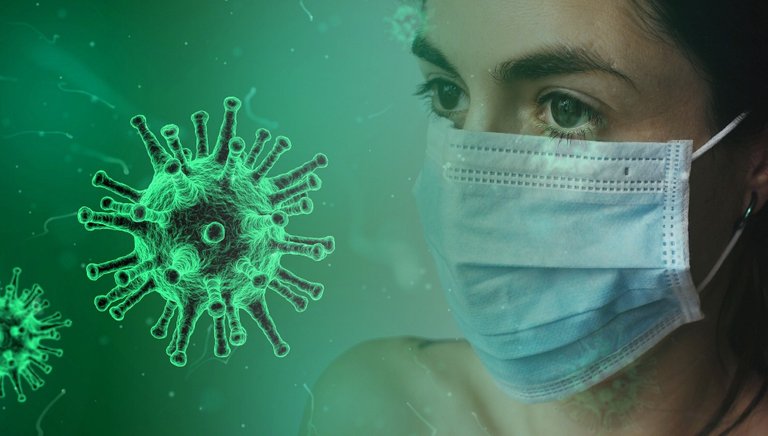COVID-19 Made Two Strains Of The Flue Go Extinct
Pathogens require an opportunity to spread. And the current COVID-19 pandemic shows that it all it takes to prevent them is to wear face masks, do a bit of social distancing, and clean your hands.

- Be also sure to check out my other posts and follow me @kralizec and subscribe to my Youtube channel at Kralizec Gaming Youtube Channel
The COVID-19 pandemic has had a number of interesting consequences. There are very few people in the world who remember a similar crisis. So, sometimes we find out very interesting things. Some even positive. And now, it seems that one of the losers of the pandemic is the flu. Though, if you think about it it does make sense.
Everything suggests that during the pandemic, thanks to the simple anti-pandemic measures in place, the ability of pathogens to transfer between hosts was lowered so much that some of the strains of the flue there were among humans went extinct. And while some still don’t get it, but face masks, social distancing, and washing your hands do truly and effectively work.
At this time, humanity has to mainly deal with two types of flu RNA viruses. Viruses from group A and group B. Group A includes mostly the strains H1N1 and H3N2. Group B includes B/Yamagata and B/Victoria. Experts are constantly monitoring their behavior and spread among humanity as the Spanish Flu thought us to be careful.
Now, these flu experts are saying that since March of 2020 than haven’t seen a single virus from the H3N2 also known as 3c3. The same goes for B/Yamagata. According to Trevor Bedford from the Fred Hutchinson Cancer Research Center in Seattle and Florian Krammer from Icahn School of Medicine Mount Sinia, we have a good chance that these two strains went extinct. And perhaps they aren’t the only ones. Though, we aren’t 100 % sure they went extinct as the world is big and viruses tiny and can easily hide. But there is a good chance they did go extinct.
So, what does that even mean? The experts are convinced this is a good thing as this would lead to a decrease in flu diversity increasing the chance that flu vaccines will actually be prepared against the strain that spreads that year. Especially the strain H3N2 had a lot of genetic diversity and gave us a lot of trouble. If their diversity was reduced then that’s just awesome!
Sources:
- If you like the content I’m producing about science maybe you will like the content I produce about gaming as well! Be sure to check out my other posts!
Congratulations @kralizec! You have completed the following achievement on the Hive blockchain and have been rewarded with new badge(s) :
You can view your badges on your board and compare yourself to others in the Ranking
If you no longer want to receive notifications, reply to this comment with the word
STOPTo support your work, I also upvoted your post!
Check out the last post from @hivebuzz:
Support the HiveBuzz project. Vote for our proposal!
The effect that COVID19 has had on other diseases is quite interesting. The topic of the life cycle of diseases is quite fascinating as well.
What happens to the pathogen after a pandemic is quite interesting as well. The disease often hangs around for generations, but some times the disease seems to abate on its own.
IMHO: The use of the term "extinct" makes this particular article questionable. A drop in reported cases does not mean a pathogen went extinct. Many people stopped going to the doctor for flues and colds because of pandemic fears. People who caught the flu at the same time that they had COVID19 would be reported as COVID19.
Viruses are very small. They are simply strands of genetic materials; so they can stay viable longer than other organisms.
While the questions surrounding the lifecyle of pathogens is fascinating, I would file this in the category of junk science as they are misapplying the term "extinct."